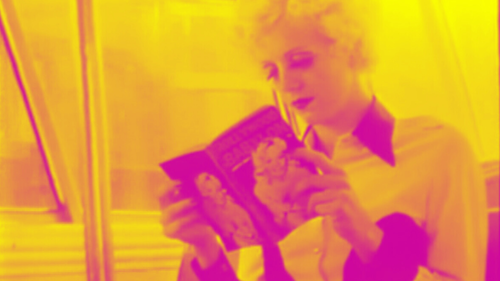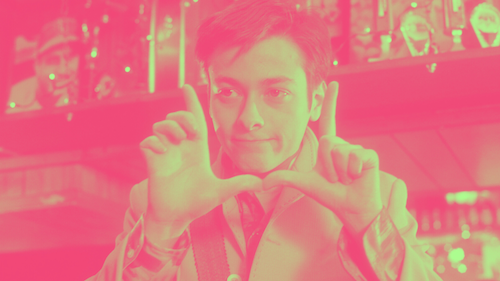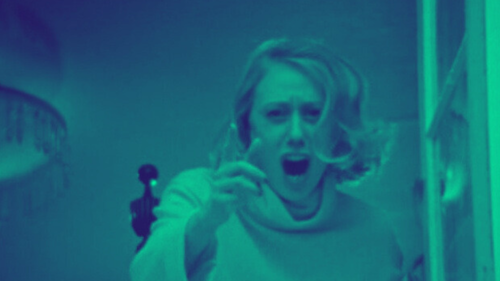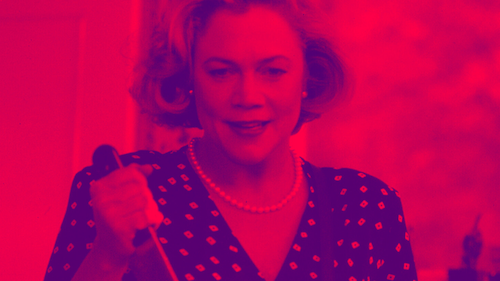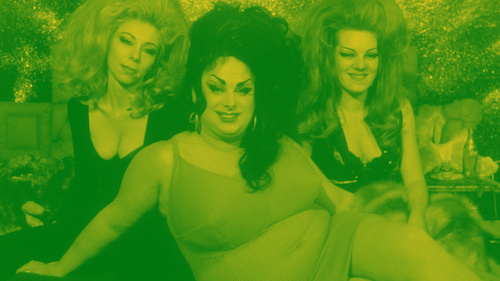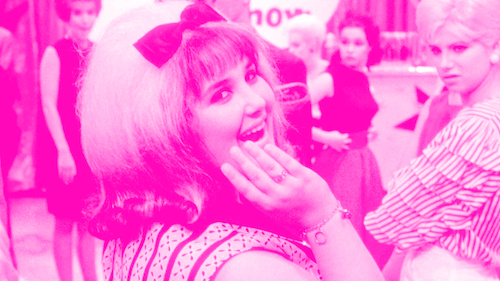Filmography Worship: Ranking Every John Waters Film
Written by Andreas Babiolakis
Filmography Worship is a series where we review every single feature of filmmakers that have made our Wall of Directors
Ah, yes. The Pope of Trash. John Samuel Waters Jr. has to be one of the most interesting figures in film history because of how wide his appeal is in comparison to how unorthodox, abrasive, and outright controversial his films can get. Waters isn’t some sort of an outsider whose works somehow made a splash despite some cluelessness. If anything, Waters is a masterful student of the cinematic medium: someone who seeks out every single theatrical release as soon as they come out, outright discusses his influences in some films via his dialogue and visual representations, and has become a bastion of how to break the rules of film (first, one has to know them, and Waters does like the back of his hand). Waters was born and raised in — where else — Baltimore, Maryland, and was raised in a highly Catholic family. Obsessed with the pugnacious comedy of Punch and Judy puppets from a young age, as well as rock n’ roll music (specifically Little Richard, hence his iconic pencil moustache), it was clear that Waters found amusement in danger. Furthermore, he was obsessed with both arthouse and exploitation films, as well as, of all things, The Wizard of Oz (the ultimate cinematic spectacle); Waters has stated his fondness for the idea of the forbidden, something explored in The Wizard of Oz (but not in the ways that Waters would tackle by any means).
It’s safe to say that Waters became a fan of the cinematic experience, perhaps even more than the film itself as a storytelling device or artistic statement. He has gone on record and gushed about gimmicky filmic showings like the Smell-O-Vision screenings of the sixties (which is why he released Polyester with scratch-and-sniff cards) or the many films of William Castle (an example being House on Haunted Hill having a skeleton with flashing red eyes and attached to a wire “fly” over the audience). In that same sentiment, we’re looking at films as objects and are distanced from them; Waters has proven himself to be a master of postmodern absurdism, shock, and satire from the very beginning. You don’t just watch a John Waters film: you feel a myriad of things from ghastly hysteria to repulsion and horror. You’ll never know what to expect in a John Waters film, and that’s precisely how he wants you to feel: without expectations. Well, outside of the embracement of all things camp, of course: something we can all afford to partake in.
On the more experimental side, it’s clear that Waters was heavily inspired by the cinematic works of Andy Warhol (especially early on) and the testing of an audience’s patience as to what they can handle. Waters has expressed inspiration from avant-garde master Kenneth Anger time and time again, from the blatant homoeroticism and affiliations with occultist imagery to the atypical approaches to filmmaking including soundtrack dissonance and hyper self-awareness. With all of this in mind, it’s still difficult to fully understand how Waters broke out of the underground of transgressive cinema and influenced film enough to have a remake of one of his works, a star on the Hollywood Walk of Fame, the title of officer of the Ordre des Arts et des Lettres, and so much more. When I was a teenager and maturing cinephile twenty-odd years ago, Pink Flamingos was deemed one of the most disturbing films ever made; to watch it was to step out of your comfort zone in preparation of something truly sickening. Now, Pink Flamingos is cherished as a rebellious dark comedy to the point of being preserved by the Library of Congress. This both boggles my mind and makes perfect sense.
There aren’t many directors like John Waters who are this uncompromised and shocking (I think he can truly get away with anything) and yet are widely celebrated and acclaimed. He’s made cameo appearances everywhere from The Simpsons to one of the Alvin and the Chipmunks films (the latter, of which, is hilarious in and of itself). Part of this double-sided coin comes from being able to hear Waters talk about film and understanding how wise-yet-curious he is as a cinephile, how honest he is, where his intentions come from, and how — oddly enough — not problematic he is compared to the audacity of his films. We get to know John Waters as a film fan, as well as an artist who wants to push as many buttons as possible. You may start watching his films thinking that he has no idea what he is doing with the sloppiness, silliness, and zaniness of his releases, but you’ll quickly come to realize that Waters was masterminding these films with much control and creativity the whole time. He can go as far as he does because he fully understands what makes motion pictures good, not because he doesn’t.
Then again, analyzing Waters almost feels far more simpler than all of these elements as well. At heart, he’s a Baltimore native who wanted to showcase the ridiculousness of overbearing governments, religion, and parenting via his anarchistic lens. “I find humour in all of the things that are terrible about America; things that people have anxiety about,” he told David Letterman back in 1982; “The first step of getting rid of anxiety is to laugh at it.” He had to work against order in order to make us feel human again. If he is to be deemed a delinquent, then how he makes films has to mirror this intention of going against order and hard-set rules. Within the ugliness of his films is also a celebration of everyday people, gay rights, drag performances, and so much more. The founder of production company Dreamland Productions, Waters is known for his usual cast members known unofficially as the Dreamlanders, including drag superstar Divine, Mink Stole, Pat Moran and Mary Vivian Pearce (all three of whom have appeared in every single Waters feature film), and more. It’s through this allegiance that you get one last understanding of who Waters is: that young movie lover at heart who makes films in his backyard with a personal camera, no budget, and whatever the cinema gods guide him with. Watching this limitless imagination is something you don’t see enough of in film. I see my own childhood filmmaking wonkiness and aspirations in Waters’ films, and I guarantee many feel the same way.
Now we get to the hard part: ranking his films. It usually feels simpler to rank a director’s filmography because I can tell which films resonated with me more or less than others, but Waters’ career — as you can ascertain by now — is quite unique. You don’t really judge his films by how “well put together” they are or which works spoke to you as a person. On the other hand, it also feels wrong to rank these works simply by which films grossed me out the most or made me laugh the hardest. I’ll try and judge these films by how much they entertain me, go outside of their own boundaries, challenge me via artistic and/or transgressive choices, how much they accomplish as pieces of post-modernism (if this applies), and my willingness to revisit these films ever again (which, given the subject matter for some of these titles, says a lot). From midnight indies to mainstream hits, Waters wanted to “spread his germs” to the masses, get Americans recontextualizing their stomping grounds, and celebrate “good bad taste” and campiness to the max; if you vomit during one of his films, he’d consider it a standing ovation, so don’t feel bad if you need to grab a barf bag. Here are the films of John Waters ranked from worst to best.
16. A Dirty Shame
At the time of this article, A Dirty Shame is Waters’ last film (although he is due to work on Liarmouth in the near future), and it’s easy to see why. While this bizarre film did make me laugh a few times, A Dirty Shame is unquestionably Waters’ weakest film because of how hard it tries to be upsetting. Birthed during the height of the highly taboo start of the twenty-first century (including the music of Eminem, shows like South Park, and the now instant access to pornography at our fingertips), A Dirty Shame is a conflict between the super right-wingers who want a “civilized” society and the sex-obsessed degenerates who threaten to besmirch the neighbourhood. There are some good ideas here in a way that this feels like Waters’ answer to David Cronenberg’s Crash (and the complications of sex obsession and fetishization), but A Dirty Shame also feels like I’m back in grade seven again (and not in a good way). It feels beneath Waters, sadly.
15. The Diane Linkletter Story
One of the works that Waters himself has dismissed, the horrifying camera experiment known as The Diane Linkletter Story (which involves an improvised, hysterical version of the actual suicide of the titular person, the daughter of TV mogul Art Linkletter) is just bad. It’s too short to really make any proper impact (it’s only nine minutes, but, to be fair, it is literally just a camera test), and its subject matter is incredibly in poor taste. It was once nearly impossible to find (like some of the other titles on this list), but it is now making its rounds on YouTube and other video-sharing sites. Only watch it if you are a John Waters completionist; it otherwise is hardly worth it. I have this above A Dirty Shame because it’s at least so short that I can move on from it quite quickly.
14. Mondo Trasho
I think there’s something to find in the rest of these films on this list. Waters may feel differently as he has also written off his debut feature film, Mondo Trasho, stating that this should have been a short film and that it overstays its welcome at an hour and a half long. I can see that, but the Warholian influence is ever so present here, making Mondo Trasho work as a difficult film to digest in a direct sense (and never mind its “story”, if you can even make it that far). Shot on 16mm and without sound on set (with a budget of around two thousand dollars), the majority of the soundtrack comes from popular songs being juxtaposed with controversial imagery (including “Remember (Walking in the Sand)” by The Shangri-Las before TikTok destroyed one of my favourite girl group songs). Mondo Trasho feels like it was radioed in from another dimension, and I find that appealing myself; I’d recommend starting elsewhere if you have never seen a John Waters film because of how difficult this one is.
13. Hag in a Black Leather Jacket
The next three films on this list are short films that are borderline impossible to watch outside of travelling exhibits and retrospectives (or as part of the short film montage at the John Waters: Pope of Trash exhibit at the Academy Museum of Motion Pictures (which is how I got to see them, fortunately). I’ll keep these short and sweet because they’re similar enough to Mondo Trasho with how low-budget and rudimentary they are (their shortness automatically places them higher). We start with Hag in a Black Leather Jacket, Waters’ first film ever (and made for only thirty dollars): a bastardization of what “purity” and holy matrimony look like in the United States. Despite the scathing depictions of marriage, lust, and racism, Waters’ mother serves as the heart of the film by supplying it with one of its only forms of sound (it’s otherwise purely silent): her delicate piano playing.
12. Roman Candles
Roman Candles is far more abstract than Hag in a Black Leather Jacket, featuring unrelated vignettes that feel more like an installation than a film (perhaps this was the case, as Waters intended for Roman Candles to be shown on three 8mm projectors at the same time). Each scenario — from the irreligious to a woman being attacked by a moving, electric fan — carries its own boldness, but everything feels independent and Roman Candles feels somewhat flat when you combine these elements together. Having said that, this film feels like a progression in Waters’ understanding of how to be provocative, and you can tell that he caught on quite early on.
11. Eat Your Makeup
The best of Waters’ short films (although I think you could call this a featurette), Eat Your Makeup is a series of horrifying ideas that build towards a coherent, cohesive idea: our society is too comfortable with exploiting those we are also forced to idolize or worship. Connecting the idea of models who are forced to work themselves to death with the assassination of John F. Kennedy (with Divine as Jackie O.), Eat Your Makeup was well ahead of its time back in the late sixties: if it was easier to see, it was a warning of how society drives its people to insanity and obsession (in various ways). I wish this film was easier to see because this one works fairly well.
10. Pecker
We have now reached the prime of Waters’ career: a multi-decade run of provocation. His attempt at making a mainstream film, Pecker, is an earnest take on a young visionary’s aspirations (the titular protagonist is a budding photographer who is torn apart by society’s expectations of him and his craft). You can tell that Waters is trying to tell the world something here about how art is to be a personal conquest first and foremost (because fame can destroy what we love and why we love it), but Pecker also feels a little confused as to what it wants to be: a full-on mainstream film that connects with everyone, or a Waters film that goes the distance. I don’t feel like he’s necessarily playing by the rules here, but Pecker also feels it could have gone even further with what it could have accomplished; it does blend in nicely with the juvenile comedies of its time, mind you. Nonetheless, I think Pecker — amongst other Waters films — deserves a revisit.
9. Cry-Baby
One of the more popular Waters films, Cry-Baby — his follow-up to the overnight sensation Hairspray, and a breakthrough move for Johnny Depp — is a lot of fun. It smushes the director’s affinity for fifties style, concepts of danger (we were so safe back then), and music (especially rock n’ roll) into a nineties rom-com. The end result is a playful look at love and societal expectations that almost feels like it is poking fun at what was once perceived to be problematic (Cry-Baby somewhat seems like it is even commenting on works like West Side Story and the accidental cheesiness that stems from the “bad boy” image of drapes). While I think some of Waters’ other films are saying even more with what they are showcasing, Cry-Baby is quite fun for what it is.
8. Cecil B. Demented
Can we admit that Cecil B. Demented is underrated yet? I know that this film is unhinged by latter period Waters’ standards, but that doesn’t mean that it is vapid. I think the tongue-in-cheek take on how the film industry kills creativity and hunger is so unapologetic that I love it; you can view it as heavy-handed, but I think some of the more brainwashed viewers need this sort of directness. Here’s a director who has now had a taste of the studio system after his eighties and nineties successes, who is exhausted by what he has seen firsthand. He channels his inner film student here with a team of terrorists who want to force underground film on the masses. With shoutouts to many amazing filmmakers, dozens of hilarious jokes that pertain to the snobbishness of us cinephiles, and a fitting take on the self-devouring way of the film business, Cecil B. Demented is successful enough that I think it’s slept on.
7. Desperate Living
The first time I watched Desperate Living, I thought I was watching something drastically different by Waters, as we’re planted in the confinements of a suburban house prison, as a housewife and her maid have had enough with their daily routines and expectations. I felt like this may have been an answer to the works of Douglas Sirk. Oh, how wrong I was. The two protagonists are now fugitives after they commit murder, and we wind up in a squatter settlement. Most of Waters’ most controversial films, particularly the Trash Trilogy (of which Desperate Living is a part of) put us right in the thick of madness from square one, but Desperate Living feels like a downward spiral where things just get loonier and loonier. Is it better to creep in from the shallow side of the pool, or to just jump head-first into the deep end?
6. Multiple Maniacs
After Mondo Trasho and a handful of shorts, Waters seemed to have figured out what he wanted to achieve with his motion pictures. Multiple Maniacs is his first talkie feature film. What feels like a precursor to Pink Flamingos, Multiple Maniacs stars Divine as someone who wants to keep outdoing herself with how far she is willing to go. The film follows suit with what feels like a nod to Ed Wood if the late Z-movie director wanted to work with lobsters (and I’ll leave it at that), as well as a jaw-dropping salute to the United States and how its people are treated. There are no bones about it: Multiple Maniacs is ludicrous, but you can say the same about almost anything else that Waters ever made. If you are a fan of his signature style, then it’s safe to say that Multiple Maniacs is his first success of sorts.
5. Serial Mom
While the later film Pecker was Waters’ attempt at appealing to the mainstream with true intentions, Serial Mom feels like a bait-and-switch prank. One of the funniest parts of any John Waters film is how seriously Kathleen Turner plays mother Beverly in this satire, as if she wound up in the Twilight Zone. Then again, she herself is bonkers as a goody-two-shoes housewife who secretly is a perverse serial killer who cannot stop her bloodlust addiction (or her fixation on those who wear white after Labor Day, of course). A delirious take on maternal expectations in America and Stepford wife syndrome, Serial Mom is as cathartic as it is savagely silly. It feels like a safe nineties drama that is cannibalizing itself into something far more interesting and risky.
4. Pink Flamingos
You may be surprised to find Waters’ most notorious film, Pink Flamingos, this low. I am rarely so torn on a film as I am with Pink Flamingos: a film I may never review in full simply because I don’t know what numerical rating I’d even give it (in a way, this is a breath of fresh air that is a testament to the power of this film). An unforgettable work of transgressive, post-modern cinema, Pink Flamingos is burned in my memory despite only having seen it twice (which is already more than most can handle, to be fair). This is an attack on the rise of film criticism at the time, films that are taken too seriously, the negligence of many voices, and the filmgoers who pride themselves as geniuses of American pop culture. I adore Pink Flamingos as a statement. I also don’t know if I can watch this film again (even two was a bit of a doozy), not because anything about the film disturbed me enough (I’m sadly desensitized for the most part) but because I have gotten what I needed from Pink Flamingos: any further viewings won’t change my mind about how I feel about it or make me discover anything else about myself, society, or film. From singing, prolapsed anuses, to the eating of dog shit, there truly aren’t many films like Pink Flamingos: not even by Waters himself. If you ever want to question what films can be or what they mean to you, Pink Flamingos will leave you questioning your relationship with cinema perhaps for the rest of your life.
3. Female Trouble
While far tamer than Pink Flamingos, Waters’ follow-up effort, Female Trouble, is still insane. What I appreciate more about this film is that it isn’t just a character trying to be outrageous just to be outrageous (Pink Flamingos does feel more like a snippet of a parallel universe than a story). Female Trouble feels more like a gradual degradation of a character (no surprise here, it’s Divine again) who is going up against the unforgiving nature of American living via her own relentlessness and rebellion; from high school dropout to death row prisoner. There’s more cohesion and purpose in Female Trouble which allows for the film to be revisited far more easily even given its striking subject matter. I’m happy that the film is getting its dues.
2. Hairspray
The tamest film Waters has ever made, Hairspray is proof that the Maryland auteur can play ball whenever he desires. Even so, Hairspray is still very much a John Waters film with his style, sense of humour, and progressiveness all over this music-heavy comedy film (while not a full-on musical like the remake on stage and screen that this film would inspire). A commentary on American entertainment, the deceptions of the American Dream, and the persistence of everyday dreamers who should no longer be silenced, Hairspray is a glorious high school film. This is evidence that Waters knows what he is doing as he finally makes an accessible film for the masses better than many of his peers were towards the late eighties. On a bittersweet note, this was finally the world’s proper introduction to Divine, who sadly passed away shortly after the release of this film and didn’t see the love he was due to receive.
1. Polyester
Don’t take this as an exaggeration: Polyester is one of the funniest films I’ve ever seen. The first time I watched it, I had tears in my eyes and nearly fell out of my chair about two-thirds of the way through. I could not believe how darkly hilarious this bleak comedy — about a housewife named Francine whose life keeps getting worse and worse — kept getting. The film goes further and further with how complicated its perversions and satirization of American culture get, how miserable poor Francine’s life gets, and how absurd Waters is willing to go; as grim as it is, the “dog” sequence had me reeling in pain from laughing so hard because of how progressively anguished this film gets.
With an even stranger ending that screams “Hollywood ending” (something that is a great joke in its own right), Polyester feels like a jab at the disingenuous films that try to teach audiences about overcoming obstacles. From implementing niches (the scratch-and-sniff card that introduces you to great smells like a skunk’s spray and gasoline) to influence the artists of new generations (I adore how The Avalanches sampled Francine’s panicked call with a high school principal for “Frontier Psychiatrist” off of Since I Left You, one of my favourite albums of all time), Polyester is an endless riot I can’t shake off. I think Divine delivers a funny performance for the ages; not many can deliver overwhelming distress as comedically as he does here. For me, due to how much this film entertains me, its seamless blend of commentary and taboo, and how true to his style it is without going too far or too safe, Polyester is John Waters’ greatest film.
Andreas Babiolakis has a Masters degree in Film and Photography Preservation and Collections Management from Ryerson University, as well as a Bachelors degree in Cinema Studies from York University. His favourite times of year are the Criterion Collection flash sales and the annual Toronto International Film Festival.




